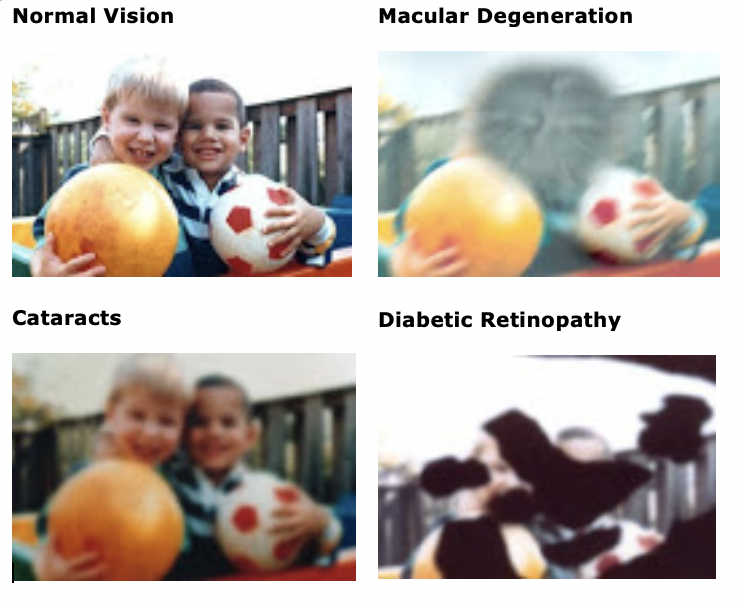September 2020 Newsletter
More Older Americans Will Suffer From Low Vision, Here’s How to Make Life Easier and Safer
The number of older Americans with low vision is expected to double in the coming years, as more people live longer. Low vision describes poor vision that can't be fixed or improved with glasses, contacts or surgery. People with low vision have blind spots that can make it difficult or impossible to drive, read or see faces. But the tragedy isn’t that people have lost vision, it’s that most believe nothing can be done to improve their quality of life. The American Academy of Ophthalmology and the Eye Centers of Northwest Ohio are taking the opportunity of September’s Healthy Aging Month to let people know they can retain their independence and stay safe, despite declining vision.
Age-related macular degeneration is one of the leading causes of low vision. Other common contributors include diabetic eye disease, glaucoma and inherited retinal diseases. Whatever the cause, vision rehabilitation helps people make the most of the vision they have left so they can live as independently as possible.
The field of vision rehabilitation has advanced significantly over the years, offering more effective technologies and strategies. Today, eye doctors can offer solutions that range from a simple, portable video magnifier that can enlarge text and objects to high-tech glasses with cameras that allow people to read text and see faces.
But there are many simple changes people can make on their own to help them live better:
Improve contrast. Put dark place mats under white place settings; buy rugs that are a contrasting color with the floor, and kitchen towels and cutting boards that contrast with the countertop. Use contrasting colored tape along the edges of rugs, stairsteps and lamp shades.
Improve lighting. Every year, about 3 million older Americans are treated for injuries from falls, according to the Centers for Disease Control and Prevention. Many of these falls are caused by low vision. Add lighting to staircases and dark hallways. Remove rugs from hallways to prevent tripping. Task lighting in the kitchen can also make food preparation safer and easier.
Reduce clutter and organize. A cluttered house is more difficult to navigate and can contribute to falls and frustration. When each item has a specific place and is identified with a high-contrast label, it’s easier to locate items needed for everyday living.
Embrace technology. Books on tape and personal voice-activated assistants, like Google Home or Amazon's Alexa, can be enormously helpful for people who can no longer see well enough to read, dial a phone or set a thermostat.
Most importantly, see an eye doctor and a low vision specialist. An eye doctor can determine the full extent of vision loss and exact location of blind spots. Either the eye doctor or a low vision specialist can then determine the best techniques and devices that can help patients get around their individual challenges.
Unfortunately, many patients are referred for vision rehabilitation as a last resort, once their disease has advanced to a late stage. But it's most effective when introduced early in a patient's visual loss, so they can involve themselves in the process as they learn how to move around in their new world.
September is Healthy Aging Month
In This Issue
How To Make Life Easier And Safer When You Suffer From Low Visionxams
See 20/20 in 2020 with the Eye Centers of Northwest Ohio
Contact Us
2311 W. Hayes Ave,
Fremont
Ohio 43420
(419) 334 8121
622 Parkway Drive,
Fostoria
Ohio 44830
(419) 435 3482
Courtesy: Prevent Blindness
Courtesy: National Eye Institute, National Institutes of Health (NEI/NIH)
No Vision Insurance, No Problem. Join our Membership Program today!
Courtesy: The American Academy of Ophthalmology
For previous newsletters:





